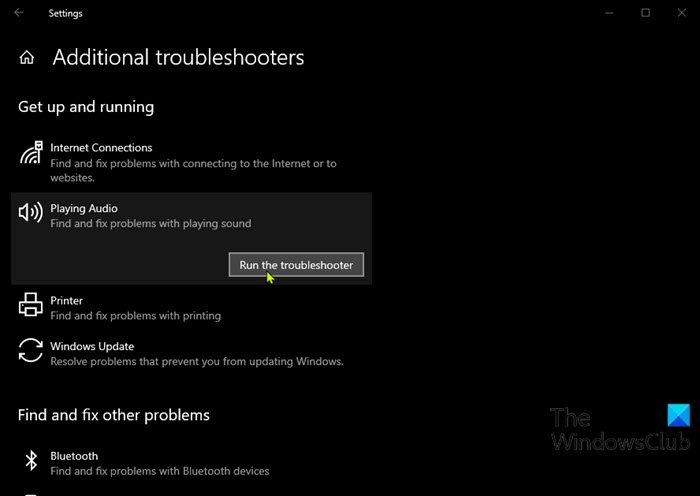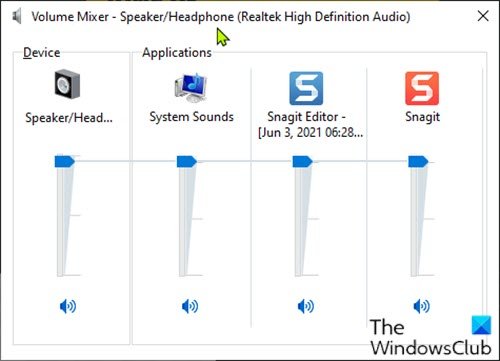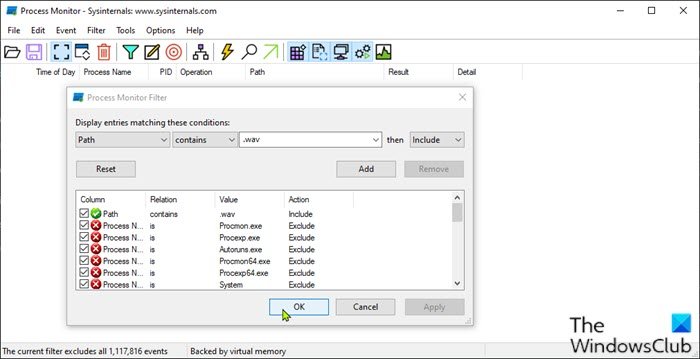If just out of the blue or after you update your Windows 11/10 PC to a newer build or version, you start to notice a random notification sound keeps playing every couple of minutes, then this post may help you. It could be an errant browser extension, Steam Inventory Helper, or any other program making these noises.
Random Notification Sound keeps playing on PC
If you’re faced with this issue, you can try our recommended solutions below in no particular order and see if that helps to resolve the issue.
- Restart computer
- Run Audio Troubleshooter
- Check Volume Mixer
- Use Process Monitor to monitor sound
- Check the mouse
- Check web-browser extension
- Update Sound card drivers
Let’s take a look at the description of the process involved concerning each of the listed solutions.
1] Restart computer
The first thing you can try to fix the issue on your Windows device is to restart your system. If that doesn’t work, try the next solution.
2] Run Audio Troubleshooter

This solution requires you to run the native Audio Troubleshooter to find the sound driver issues, if any on your Windows PC, and fix them.
3] Check Volume Mixer

The Volume Mixer shows all the programs that are currently using your sound devices. This solution requires you to open Volume Mixer and use the utility to find out the program that is causing random noises.
You will see various soundbars. If an app is making a sound, the bar will show a green color. Keep looking at it for a while to identify the app. Once you identify the culprit, you can mute or disable its sound.
Read: Computer playing music by itself randomly
4] Use Process Monitor to monitor sound

This solution requires you to use the Process Monitor tool to find out the exact program that is generating sound. You need to configure the tool to track the applications that is triggering the notification sound. Here’s how:
- Download the Process Monitor tool.
- Unzip the package.
- Click on the Procmon file to open it.
- The Process Monitor Filter window will open. If that doesn’t happen, click on Filter at the Menu bar and select Filter.
- Next, click on the first drop-down box and select Path.
- Next, click Contains and in the text box, type .wav.
The .wav file extension is specifically added because most of the notification sounds are in the .wav format.
- Click the Add button.
- Click Apply > OK.
- Next, click File on the Menu bar.
- Click Capture Events.
Now, keep Procmon tool running in the background. Do not close it. Wait for some time until you hear the sound. Then, look under Process Name and Path columns to find out the app that is pushing the notification sound. You could filter for .wav processes.
5] Check the mouse
A faulty mouse was reported by some Windows PC users as the culprit behind the random notification sound. So, disconnect the mouse for a while and see if the issue is fixed. You can also try changing the USB port of your mouse too or change the mouse altogether.
If you don’t want to replace the mouse yet, you can mute the connect and disconnect sound – bear in mind that this action will apply to all the devices that you connect to your PC.
Related post: Stop random USB connection or disconnection sounds on PC
6] Check web-browser extension
Some users also reported that the Steam Inventory Helper web browser extension was the culprit. So, if you have the extension installed, navigate to the settings of the extension and turn the sound off or disable the extension altogether.
7] Update Sound card drivers
An outdated or corrupted sound driver could potentially cause this issue. In this case, updating or reinstalling the sound driver could fix the issue.
You can either update the sound card drivers manually via the Device Manager, or you can get the driver updates on the Optional Updates (if available) section under Windows Update. You can also download the latest version of the driver from the sound card manufacturer’s website.
If you do not like sounds, you can always Turn Off Notification and System Sounds completely.
I hope this helps!
Read next: Make Notification dialog boxes stay open longer in Windows.